Nasturtiums are admired for their edible leaves and flowers that come in a gorgeous assortment of colors. They thrive as companion plants and will generally take care of themselves. However, there are a few problems that your nasturtiums may face which could eventually result in their death. Read on to find out more.
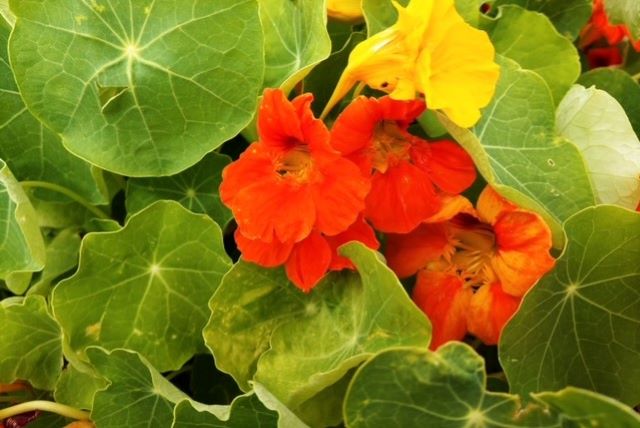
Table of Contents
Why Are My Nasturtiums Dying?
The most common causes of dying nasturtiums are aphids, whiteflies, overwatering, lack of sunlight, and hot temperatures.
Let’s take a closer look at each cause of dying nasturtiums (Tropaeolum sp.), with solutions to fix the problem so you can look forward to healthy nasturtiums once again.
1. Aphids
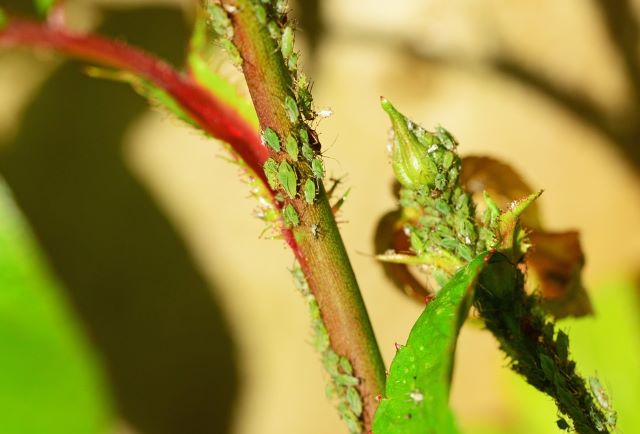
Aphids are tiny insects in a variety of colors such as green, black, brown and yellow, that suck the sap from the leaves of your nasturtium plants. These pests will leave the nasturtium leaves looking wilted, mottled, yellow, or curled. If an aphid infestation is left to ravage your nasturtium plants, it may eventually lead to the death of your plants.
An adult aphid can produce up to 80 offspring per week. This reproductive ability poses a threat to all your plants, not just nasturtiums, especially in mild humid conditions.
Aphids also excrete a sticky honeydew as they feed on leaves. This substance eventually turns black and has been known to promote the growth of fungus (mold).
Controlling any type of pest infestation on your plants is never an easy task. But don’t be discouraged, there are many eco-friendly methods to ridding aphids from your nasturtiums.
One of the most effective methods to keep aphids at bay is to check the undersides of your nasturtium plant’s leaves, on a regular basis, for any signs of pests.
Then if you find any aphids, my favorite method to remove them is to blast them off the leaves of my nasturtiums by giving them a good hose down with water.
Spraying nasturtium leaves with a soapy water concoction is also effective for removing aphids.
If your aphid infestation is extensive, use insecticidal soap or neem oil which will kill aphids by smothering them.
It’s important to remember that you shouldn’t use insecticidal soaps or horticultural oils on your nasturtiums when they are exposed to high temperatures – 85°F (29°C) and above. This is because these products can become phytotoxic to your plants in these conditions.
Another popular method used to control crawling or flying insects is sticky traps. Place them around the base of your nasturtium plants and their leaves.
Ladybugs and lacewings also naturally control aphids. Planting a diverse garden will naturally attract beneficial insects that will help keeps pests in check.
2. Whiteflies
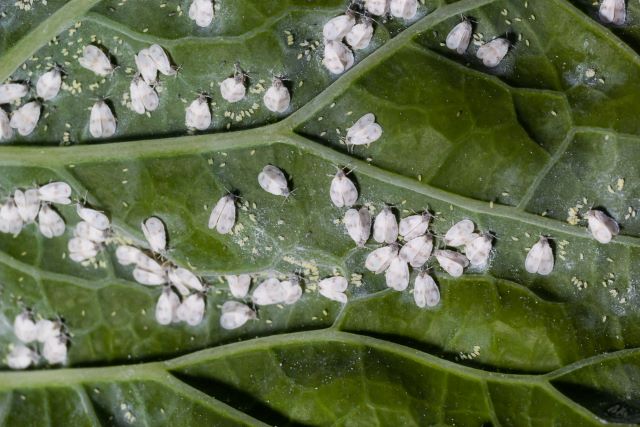
Aphids aren’t the only pests that can wreak havoc amongst your nasturtiums. Whiteflies feed on the sap from the undersides of your nasturtium leaves, causing your leaves to discolor and even sometimes killing your plants.
Whiteflies can be identified by their tiny yellow wax-coated bodies and white wings. These pests are generally gathered on the undersides of your nasturtium plant’s leaves and can spread from leaf to leaf.
Controlling the spread of whiteflies can be achieved by sprinkling diatomaceous earth on the leaves and base of your nasturtium plants. This is a safe organic method to kill an array of pests.
Neem oil and sticky traps can also be effective in controlling the whitefly population.
3. Overwatering
Nasturtium leaves will begin to turn yellow and die off if your plant is submerged in water for too long. Or if it’s constantly overwatered.
Although nasturtiums do enjoy soaking up water and are known to be thirsty plants, they do not grow well in drenched, waterlogged soils. Surprisingly, nasturtium plants thrive in poor soil conditions, but prefer to grow in well-drained, moist, sandy soil.
Nasturtiums that are grown in pots or containers will need to have their soil amended if it is too clumpy, as these clumps can hold more moisture than is needed.
I recommend adding perlite to your soil as it will increase its drainage properties and provide the ideal soil conditions for your nasturtiums.
If you’re worried you may be overwatering your nasturtiums, a general rule is to give your plants a deep watering once or twice a week. This does depend on your climate and natural rainfall.
I also recommend using the finger-test method; if the top layer of the soil appears dry, stick your finger into the soil, about an inch down, in order to determine if the soil is still damp below the surface. If the soil is still damp, hold off watering for another day.
4. Lack of Sunlight
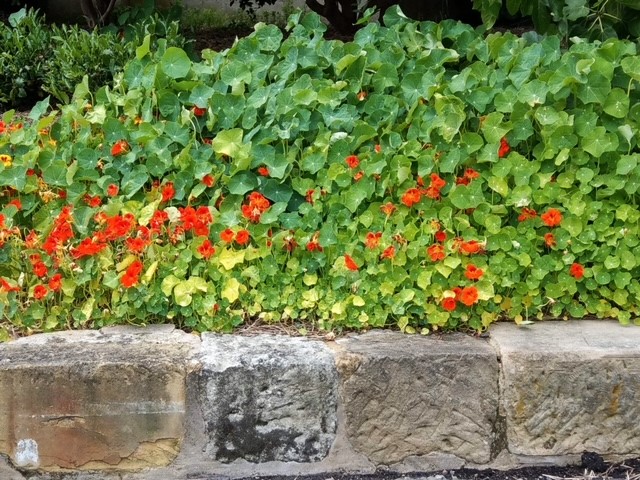
Nasturtiums need between 6-8 hours of sunlight per day. They are best suited to growing in full sunlight but can withstand some shade. Growing nasturtiums in an area with poor sunlight will increase the risk of fungus and diseases forming on the foliage of your plants.
The leaves of a nasturtium plant will begin to turn yellow and die if it doesn’t receive sufficient direct sunlight. So it’s important they receive adequate sunlight for the promotion of growth and the development of their flowers.
Before planting nasturtium, check your garden for a full sun position and plant them there.
5. Hot Temperatures
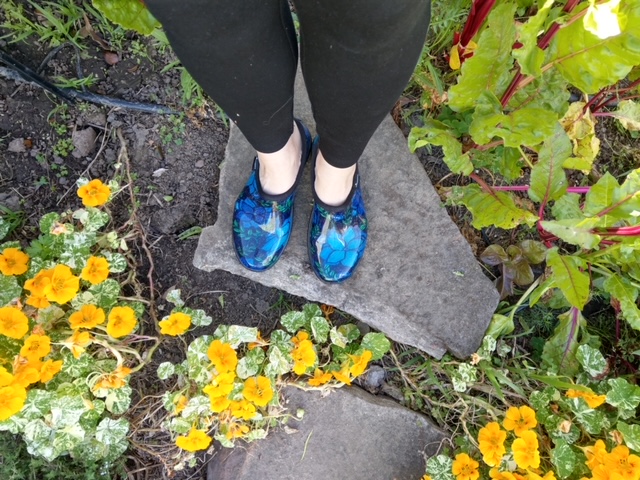
As mentioned above, nasturtiums need full sunlight to grow. However, this can create a problem when temperatures begin to soar. When the leaves of nasturtium are exposed to high temperatures above 85°F (29°C), they can turn yellow and become withered from the scorching heat of the sun.
Nasturtiums are known as cool-season plants and grow best in the spring and fall when temperatures are between 55-70°F (13-21°C). They have even been known to endure temperatures as low as 30-40°F (-1-4°C), as nasturtiums can handle a light frosting. If you are growing nasturtiums in a warmer climate, you will need to provide them with some form of protection from the sun.
When temperatures begin to rise, you could cover your nasturtiums with a light shade cloth. Black and green colored shade cloth is recommended as it will absorb the scorching heat from the sun, while white shade cloth reduces the amount of useful light that your plants will receive.
If your nasturtiums are pot-grown, you can easily move the pot to an area that receives morning sunlight but still gets some shade and relief from the hotter afternoon sun.
Planting nasturtiums earlier in the growing season works well as you will be able to prevent young nasturtium plants from being exposed to warmer summer temperatures.
Personally, if the weather is too hot, I allow my nasturtium to die back, knowing they have already produced many flowers and seeds. As an annual plant, when the temperature cools again, nasturtiums will pop up again all on their own!
Further Reading:
